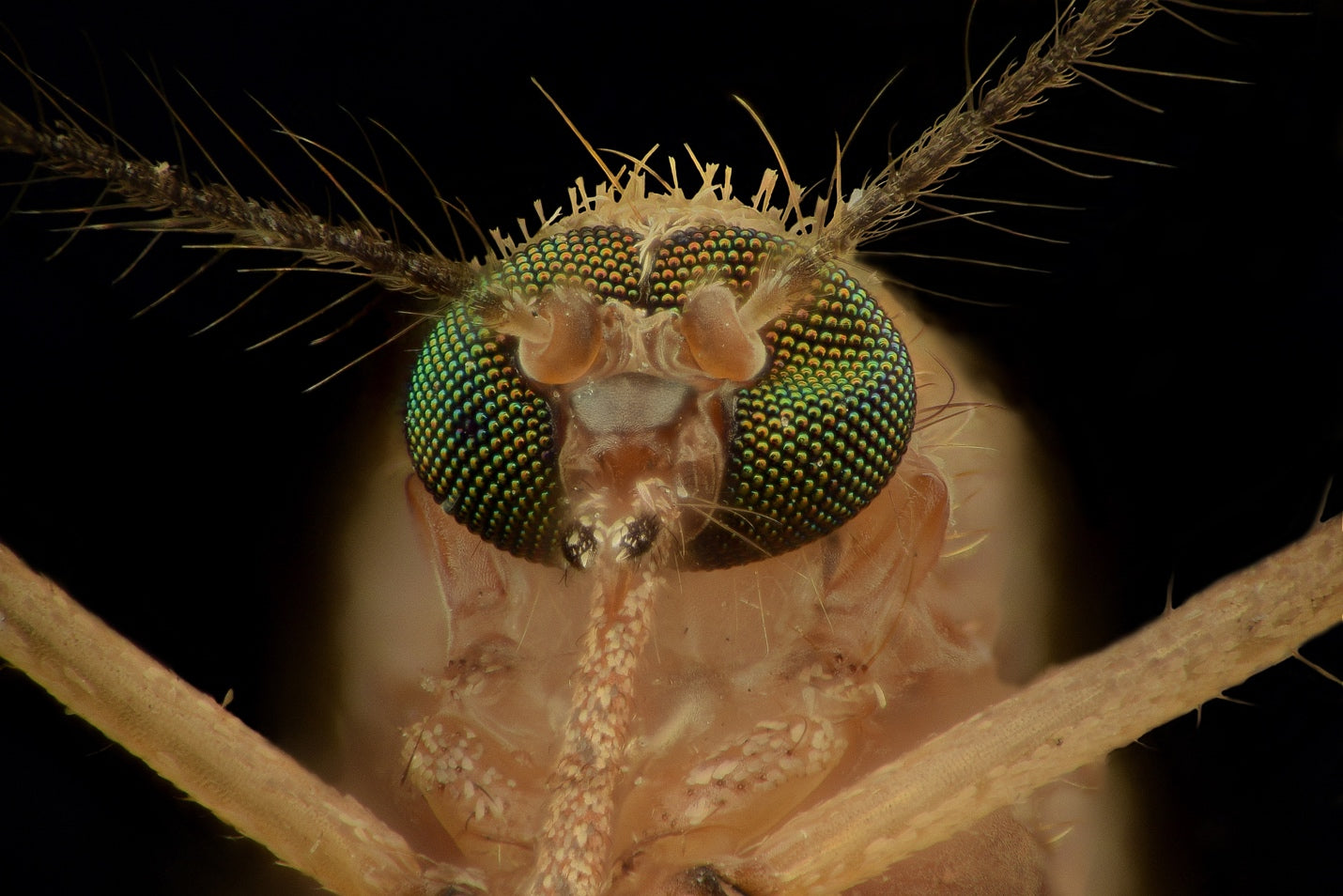
Basic Mosquito Anatomy - MosquitoNix®
Mosquitos may not be your favorite animal to learn about but it may be important to be able to recognize them if you would like to avoid being taken as a meal from one of these blood sucking pests.
Going a little beyond just recognizing mosquitos if you may be near them, understanding how they are built can also help give some insight into their annoying behavior and why they bite humans.
Mosquito Anatomy
Mosquitos are true insects, meaning that they have three main body parts: head, thorax and abdomen.
Mosquito head
Mosquitos have a head that is round. The mosquito's head holds its sensory organs, including the brain, two compound eyes covered with tiny lenses called the ommatidia, plus photosensitive eyes, the ocelli, that detect light variations. Mosquito eyes have hundreds upon hundreds of smaller lenses that aid mosquitos in performing precise tasks, like sucking your blood. The ommatidia, mentioned above, give this tiny flying insect a wide-angle view of the world. The ocelli, also mentioned, detect motion, which is why mosquitoes can often fly away before you can squish them.

Mosquitoes also have two antennae that work in tandem with their eyes to hunt for food. Mosquito antennae are sensitive enough to determine if a mosquito is male or female just by the beat of their wings.
Female mosquitoes extract blood from humans and animals through a long, needle-like tube called a "proboscis." The proboscis contains six individual needles (covered by a protective sheath) and functions somewhat like a Swiss army knife. These needles have sharp serrated edges for cutting into the skin which keeps the blood from clotting so that the female can take as much blood as she can hold. While female mouthparts are the stuff of horror films, just really, really, tiny, males have different mouth parts that allow them to extract nectar from plants. Only female mosquitoes take blood meals so that they can develop their eggs. Males dine solely on plants.
Mosquito thorax
The thorax is the upper part of the mosquito's body, with two scaled wings and six delicate legs. The thorax is actually divided into three smaller portions of the mosquito's body: the prothorax, mesothorax and the metathorax. The prothorax is nearest to the head, the mesothorax is in the middle and the metathorax towards the end.
Each leg contains tiny claws for clinging to surfaces. Mosquitoes use their large wings to hunt for food and mates, although most don't travel far from home and live their entire lives only a few hundred feet from where they were hatched.

Mosquito abdomen
Mosquitoes have long, narrow abdomens for digesting fluids. The abdomen contains spiracles, which are small openings on either side of the abdomen that let mosquitoes draw in air. If you ever study a mosquito while biting, you'll see her translucent abdomen turn red as she feeds. To make room for blood, water is squeezed out the back of the abdomen in tiny droplets, creating more space.
The mosquito abdomen also contains the insect's reproductive organs.
Mosquitos and blood
Mosquitoes don't need blood to survive. They get plenty of nourishment from nectar and plant sugars. Only females drink blood, which they do to stock up on protein to produce eggs. During her lifespan, a female mosquito may create hundreds of eggs - which means she'll need lots of bloody protein.
Mosquito attraction
Mosquitos do have preferences when it comes to who they choose for their next blood meal and may choose a specific person in a group, rather than targeting someone at random.
Mosquitoes are equipped with sophisticated sensors on their heads that detect human and animal breath, as well as body heat and sweat. These mosquito "superpowers" make it impossible for humans and animals to hide from them. We essentially have invisible, biological "bullseyes" on our bodies.
These pests do have meal preferences. The aroma of your sweat will determine whether you're a target or not. Some people produce more lactic acid than others, which mosquitoes are attracted to. Also, mosquitoes tend to go for type O blood whenever possible (as opposed to types A and B).
Alcohol consumption and physical activity (which produces more sweat) can make you more appealing to mosquitoes too. These flying insects are also attracted to dark clothing.
Protecting your outdoor spaces
Swarms of biting mosquitoes are a nuisance and health hazard, which is why it's beneficial to eradicate them from your property.

MosquitoNix ® is proud to offer a wide range of mosquito and pest control options, both in residential and commercial settings. Our outdoor pest solutions work to keep your outdoor lifestyle mosquito free. Contact MosquitoNix® - the national leader in mosquito control - to learn about the best way to control mosquitoes. Our on-site misting systems, portable misters and hands-on mosquito control services will help you Make Mosquitoes a Thing of the Past™. With our help, you can be sure to enjoy your outdoor spaces free from those annoying pests who are determined to make a meal of you.
Leave a comment
Comments will be approved before showing up.




